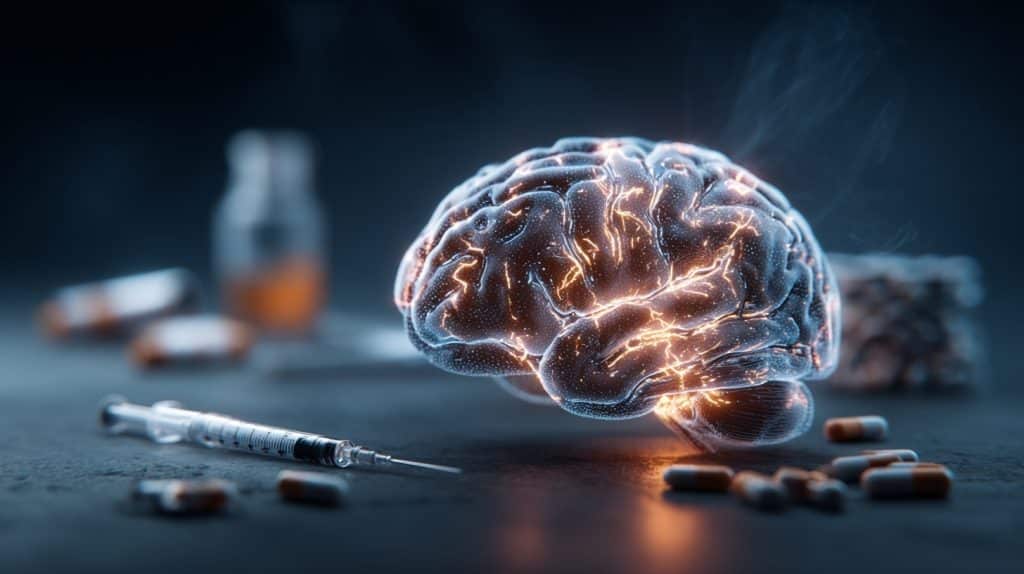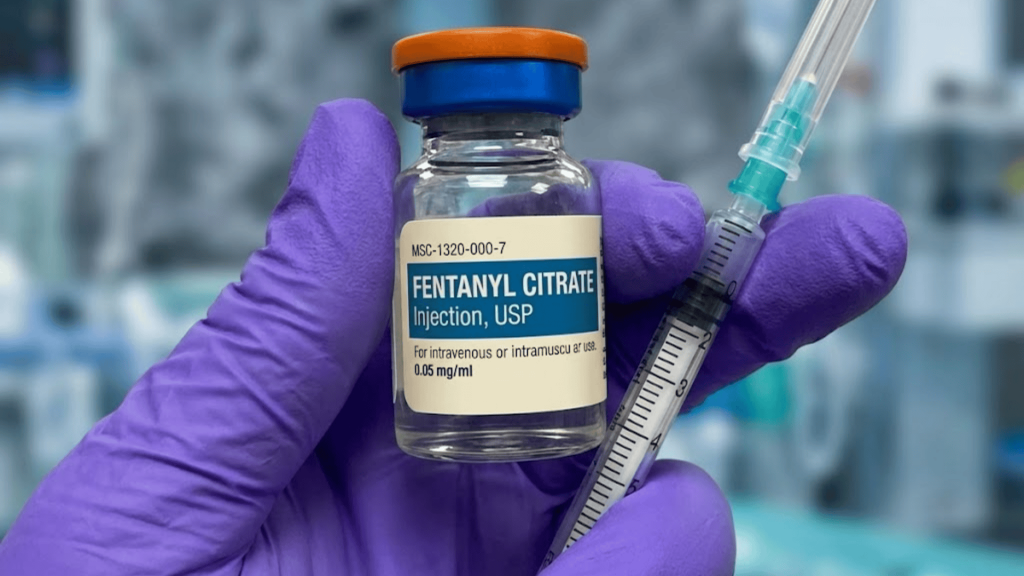Have you ever wondered why some substances hook people faster than others? It’s not just about willpower; it’s about how certain drugs hijack your brain’s reward system.
When you use something highly addictive, it floods your brain with dopamine, the same chemical that makes you feel good after eating or achieving something. But the rush fades fast, leaving you chasing that feeling again and again.
Understanding what makes a drug the most addictive substance helps you see why quitting can be so difficult, and why prevention matters.
In this blog, I’ll break down what experts say, how addiction develops, and which substances rank highest for dependence and long-term risk.
The Most Addictive Substance: Heroin
Experts identify heroin as the most addictive substance, according to a widely cited study published in The Lancet by Professor David Nutt et al. (2010) titled “Drug harms in the UK: a multicriteria decision analysis.” This research ranked 20 commonly used drugs based on their potential for dependence and physical harm, and heroin scored the highest overall for addictiveness.
Heroin acts almost instantly after entering the body, binding to opioid receptors in the brain and releasing an intense surge of dopamine, the neurotransmitter responsible for pleasure and reward.
The National Institute on Drug Abuse (NIDA) confirms that heroin “floods the brain very quickly,” producing an intense rush that fades rapidly, causing severe cravings and dependence.
Even limited use can trigger addiction within days as the brain adjusts to constant overstimulation. Over time, tolerance develops, and users need higher doses to achieve the same effect.
Synthetic opioids like fentanyl have since surpassed heroin in potency; according to the U.S. Centers for Disease Control and Prevention (CDC) and research in the Journal of Clinical Medicine (MDPI, 2023), fentanyl is 50–100 times stronger than morphine and now drives most opioid-related overdose deaths worldwide.
Comparison Chart
| Substance | Dependence Score (0–3 Scale) | Dopamine Impact | Dependence Risk | Legal Status |
|---|---|---|---|---|
| Heroin | 3.00 | Extreme dopamine surge | Very High | Illegal |
| Cocaine | 2.39 | Rapid dopamine buildup | Very High | Illegal |
| Nicotine | 2.21 | Fast dopamine release | High | Legal |
| Barbiturates | 2.01 | Strong GABA suppression | High | Controlled |
| Alcohol | 1.93 | Alters GABA and dopamine | High | Legal |
| Benzodiazepines | 1.83 | Increases GABA, a sedative | Moderate–High | Prescription only |
| Amphetamines | 1.67 | Boosts dopamine & norepinephrine | High | Prescription only |
| Methadone | 1.64 | Activates opioid receptors | Moderate–High | Prescription only |
| Cannabis | 1.51 | Stimulates cannabinoid receptors | Moderate | Legal/Controlled |
| Caffeine | 1.13 | Mild dopamine effect | Low | Legal |
Data Source: “Drug harms in the UK: a multicriteria decision analysis,” The Lancet (2010), Professor David Nutt et al.
How Scientists Measure Addictiveness
Not all substances are equally addictive.
Researchers and neuroscientists like Dr. Nora Volkow, Director of the National Institute on Drug Abuse (NIDA), and Professor David Nutt from Imperial College London, have extensively studied how drugs trigger the brain’s reward system and create dependency.
Their findings show that the speed and intensity of dopamine release play a central role in determining how addictive a substance is.
The brain’s dopamine loop explains this clearly: addictive substances flood the brain with dopamine, creating feelings of pleasure and reward.
Over time, the brain adapts, requiring more of the substance to feel the same effect, forming a cycle of craving and dependence.
Scientists also measure addictiveness by examining dopamine release speed, tolerance buildup, withdrawal severity, accessibility, and long-term health impact.
Understanding Dependence, Tolerance, and Addiction
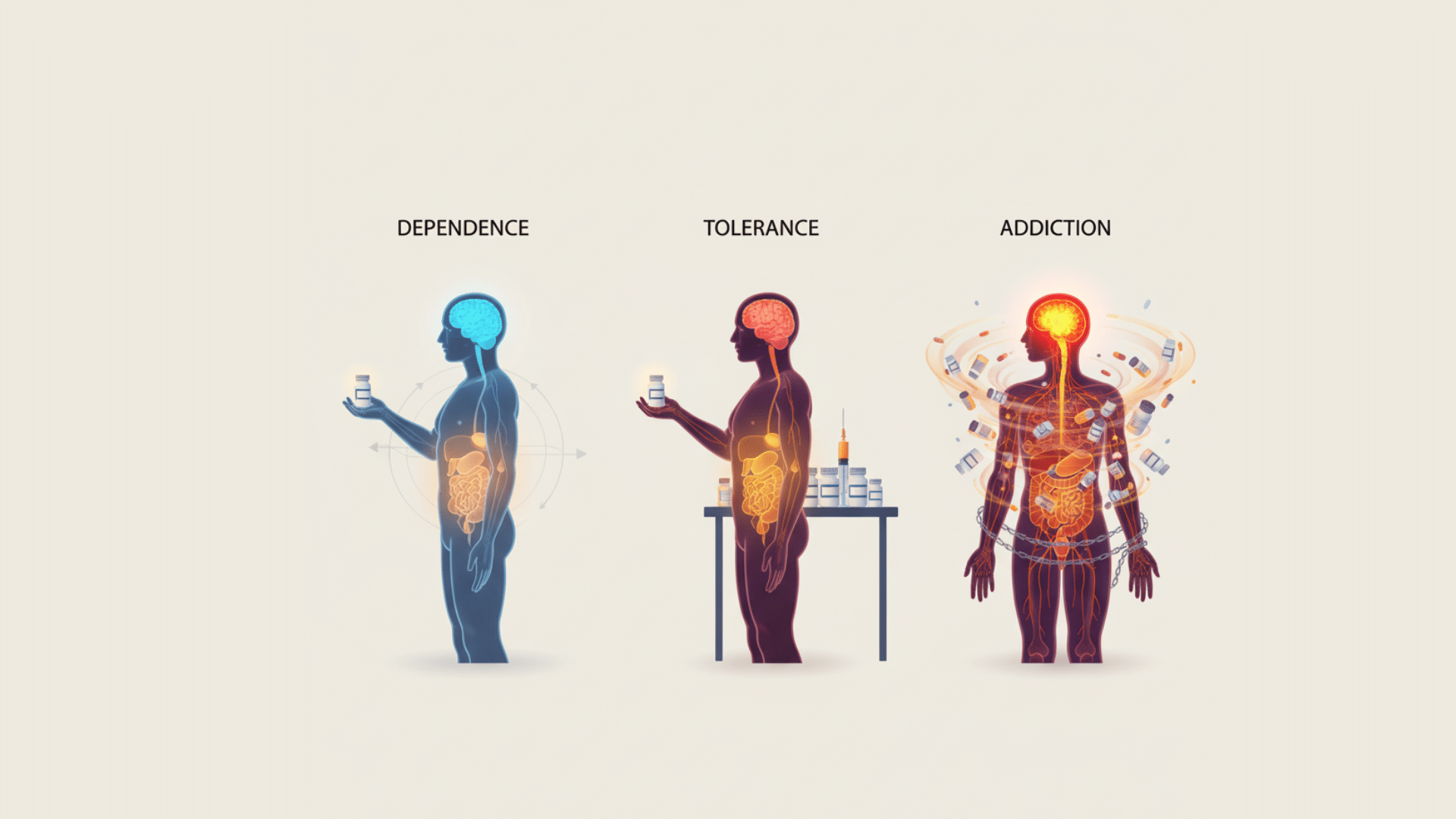
Dependence, tolerance, and addiction describe how the body and brain react to ongoing substance use.
Dependence happens when your body adjusts to a drug, and stopping it causes physical or emotional withdrawal symptoms.
Tolerance develops when your body gets used to the substance, making you need more to feel the same effect.
Addiction goes a step further, it’s when you continue using despite knowing it causes harm. At this stage, the brain’s reward system changes, driving strong cravings and loss of control.
Understanding these stages shows that addiction is not just about habit or willpower but about how the brain and body adapt over time to repeated exposure.
Most Addictive Substances Ranked
These substances are ranked based on how powerfully they trigger dopamine, how quickly dependence forms, and how severe withdrawal becomes.
1. Heroin
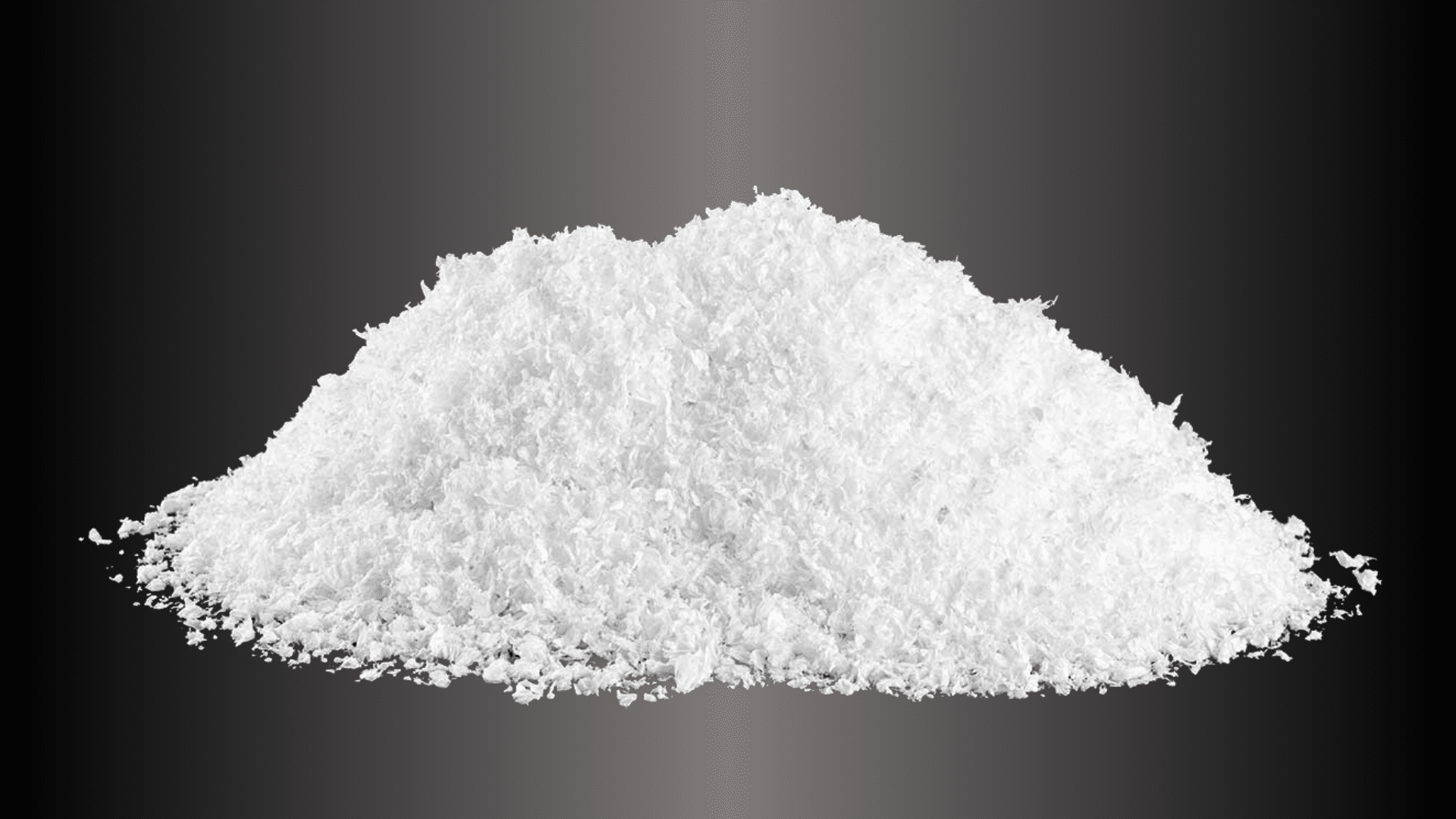
Chemical Formula: C₂₁H₂₃NO₅
Common Form: White or brown powder, or a sticky substance known as “black tar.” Usually injected, smoked, or snorted.
What It is: Heroin is an illegal opioid made from morphine that creates a powerful and fast-acting sense of euphoria. It’s often injected, snorted, or smoked, producing intense pleasure followed by deep calm.
How It Affects the Brain: It enters the brain almost instantly, binding to opioid receptors and flooding it with dopamine, reinforcing repeated use.
Addiction and Withdrawal: Dependence develops after only a few uses. Withdrawal brings severe pain, sweating, restlessness, and anxiety.
Important Fact: Synthetic opioids such as fentanyl are even stronger, up to 100 times more potent than morphine, and now account for most fatal overdoses globally, making them the leading cause of opioid-related deaths.
2. Cocaine

Chemical Formula: C₁₇H₂₁NO₄
Common Form: White powder for snorting; “crack” cocaine appears as small, rock-like crystals for smoking.
What It Is: Cocaine is a stimulant made from coca plant leaves, used recreationally for its short-lived bursts of energy, alertness, and confidence. It’s typically snorted, smoked, or injected.
How It Affects the Brain: Cocaine blocks dopamine reuptake, causing an intense buildup that overstimulates the brain’s reward system and produces a quick, euphoric high.
Addiction and Withdrawal: Dependence forms rapidly. When the high fades, users experience depression, exhaustion, and powerful cravings to repeat the rush.
Important Fact: Crack cocaine, a smokable form, enters the bloodstream faster, delivering a stronger but shorter effect that increases both addiction potential and overdose risk.
3. Nicotine

Chemical Formula: C₁₀H₁₄N₂
Common Form: Found in cigarettes, cigars, chewing tobacco, and vaping liquids.
What It Is: Nicotine is a legal stimulant found in tobacco products and e-cigarettes. It’s one of the most common and addictive substances worldwide.
How It Affects the Brain: Within seconds of inhalation, nicotine reaches the brain and triggers dopamine release, producing calmness and focus while reinforcing the habit.
Addiction and Withdrawal: Dependence builds through frequent use. Quitting often causes irritability, headaches, and trouble concentrating, leading many to relapse.
Important Fact: Despite its legality, nicotine addiction is responsible for millions of deaths each year due to smoking-related heart and lung diseases, making it one of the deadliest addictions globally.
4. Alcohol

Chemical Formula: C₂H₆O
Common Form: Liquid form in beverages like beer, wine, and spirits.
What It Is: Alcohol is a legal depressant that slows brain activity and promotes relaxation, calmness, and mild euphoria. It’s socially accepted yet highly addictive when misused.
How It Affects the Brain: It increases GABA and dopamine activity, reducing anxiety and inhibitions while altering normal brain function.
Addiction and Withdrawal: Over time, tolerance and dependence develop. Withdrawal can cause shaking, sweating, and severe anxiety or seizures.
Important Fact: Alcohol causes more preventable deaths each year than most illegal drugs combined, due to liver disease, accidents, and long-term organ damage linked to chronic use.
5. Methamphetamine

Chemical Formula: C₁₀H₁₅N
Common Form: Crystalline powder or glass-like “crystal meth” shards, smoked, snorted, or injected.
What It Is: Methamphetamine, or meth, is a synthetic stimulant that creates intense euphoria, energy, and alertness lasting for hours. It’s commonly smoked, snorted, or injected.
How It Affects the Brain: Meth releases a massive amount of dopamine, overstimulating brain cells and damaging nerve endings over time.
Addiction and Withdrawal: Dependence forms quickly. Withdrawal causes fatigue, depression, and strong cravings that can last weeks.
Important Fact: Long-term meth use destroys dopamine receptors, leaving users unable to feel natural pleasure, which deepens addiction and makes recovery extremely difficult without medical help.
6. Prescription Opioids

Chemical Formula: C₁₇H₁₉NO₃ (Morphine base)
Common Form: Pills, capsules, or syrups prescribed for pain relief.
What It is: Prescription opioids like oxycodone, hydrocodone, and morphine are painkillers that can easily become addictive with regular use.
How It Affects the Brain: They bind to opioid receptors, blocking pain and triggering dopamine release that produces comfort and euphoria.
Addiction and Withdrawal: Repeated use leads to tolerance and dependence. Withdrawal symptoms include nausea, muscle pain, sweating, and anxiety.
Important Fact: Misuse or mixing opioids with alcohol or sedatives can slow breathing and cause fatal overdoses. Synthetic opioids like fentanyl are the most dangerous due to their extreme potency.
7. Benzodiazepines
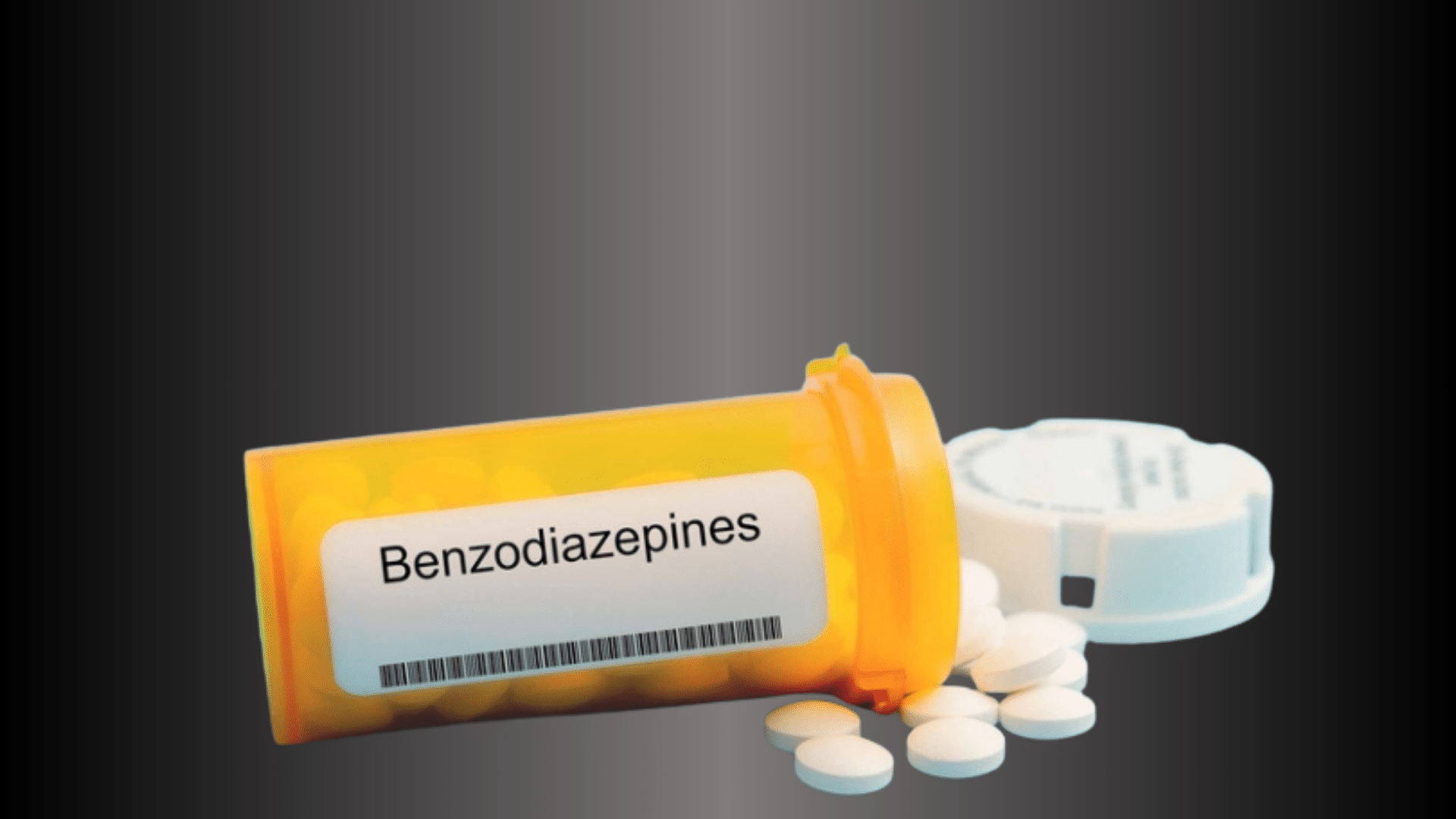
Chemical Formula: C₁₆H₁₃ClN₂O
Common Form: Prescription tablets or capsules taken orally.
What It Is: Benzodiazepines, including Xanax and Valium, are prescribed for anxiety, insomnia, and panic disorders. They work well short term but carry strong addiction risks.
How It Affects the Brain: They increase the effects of GABA, a calming chemical, slowing brain activity and reducing tension.
Addiction and Withdrawal: Dependence forms within weeks. Stopping suddenly can cause severe panic attacks, tremors, or seizures.
Important Fact: When combined with alcohol or opioids, benzodiazepines greatly increase the risk of overdose and breathing failure, making this combination especially dangerous.
8. Barbiturates
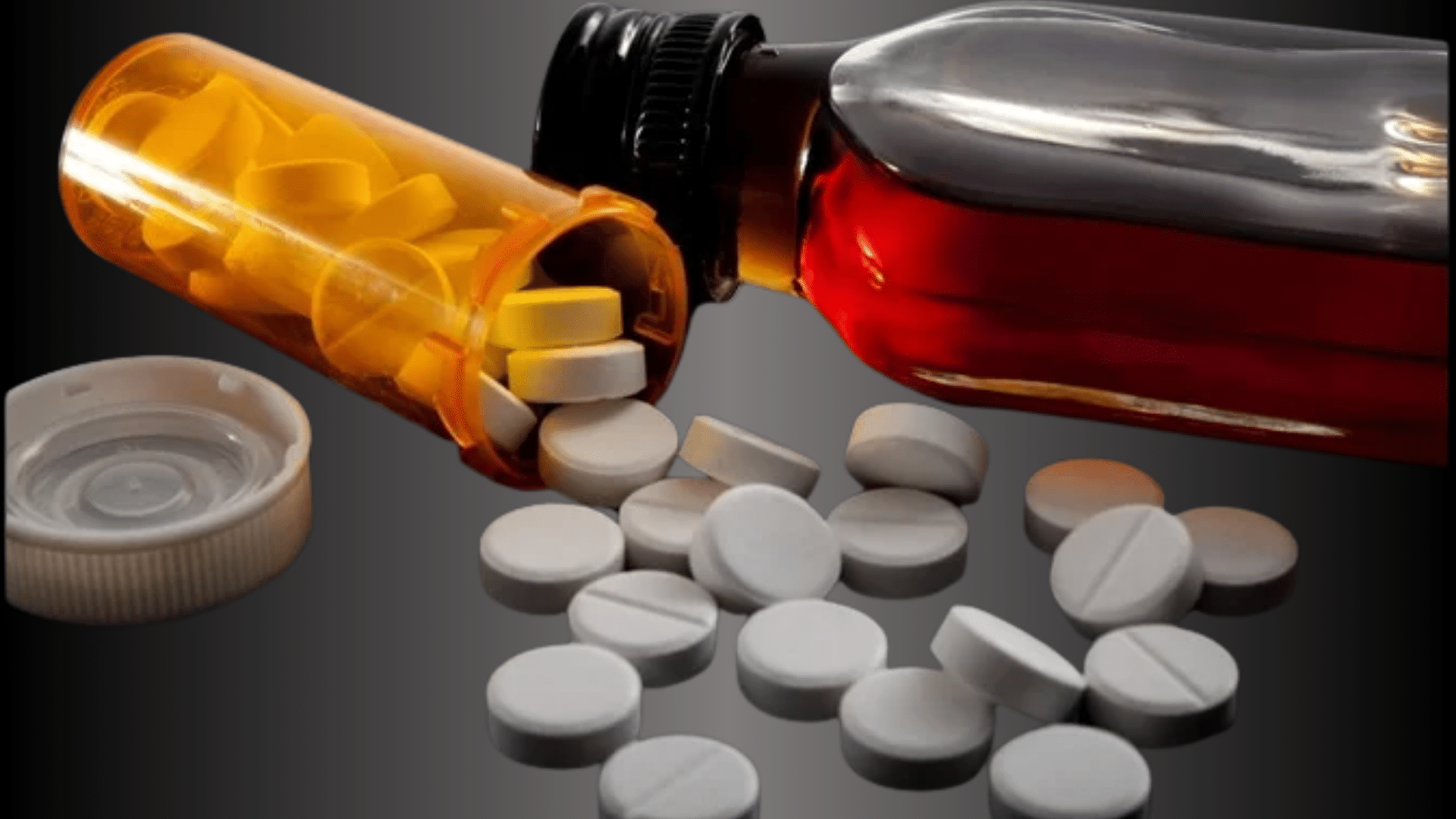
Chemical Formula: C₁₂H₁₂N₂O
Common Form: Pills, capsules, or injectable solutions used as sedatives or anti-seizure drugs.
What It Is: Barbiturates are powerful sedatives that were once used for anxiety, sleep disorders, and seizures but are now rarely prescribed.
How It Affects the Brain: They depress brain activity by enhancing GABA, creating calmness and drowsiness but slowing essential body functions.
Addiction and Withdrawal: Dependence develops quickly. Withdrawal can cause tremors, insomnia, and seizures if not medically managed.
Important Fact: Even slight overdoses can cause coma or death. Because of their narrow safety range, barbiturates have largely been replaced by safer medications.
9. Amphetamines

Chemical Formula: C₉H₁₃
Common Form: Prescription pills or tablets, sometimes misused for focus or energy.
What It Is: Amphetamines, including Adderall and Dexedrine, are prescription stimulants used to treat ADHD but can be misused for performance or energy boosts.
How It Affects the Brain: They raise dopamine and norepinephrine levels, improving focus and alertness while overstimulating the reward system when abused.
Addiction and Withdrawal: Misuse leads to anxiety, insomnia, and irritability. Withdrawal causes fatigue and low mood.
Important Fact: Long-term misuse can damage the heart, elevate blood pressure, and cause dependence that affects both mood and sleep patterns.
10. Cannabis

Chemical Formula: C₂₁H₃₀O
Common Form: Dried plant material, oils, or edibles consumed by smoking, vaping, or ingestion.
What It Is: Cannabis is a psychoactive plant containing THC, a compound that alters mood, perception, and coordination.
How It Affects the Brain: THC activates cannabinoid receptors, releasing dopamine and creating relaxation or mild euphoria.
Addiction and Withdrawal: Regular use can cause psychological dependence. Stopping leads to irritability, restlessness, and poor sleep.
Important Fact: Heavy or early use can affect memory, focus, and motivation, especially in younger people, making moderation and awareness essential.
Why Legal Doesn’t Mean Less Addictive
Nicotine and alcohol are legal, easily available, and deeply ingrained in daily life, which makes them seem less harmful, but that perception is misleading.
Their accessibility and social acceptance encourage regular use, turning casual habits into physical and psychological dependence.
Over time, these substances rewire the brain’s reward pathways, making it difficult to stop even when health problems appear.
Unlike illegal drugs, they are used more frequently because they fit into normal routines like social drinking or smoking breaks.
According to the World Health Organization (WHO), tobacco use kills over eight million people each year, and harmful alcohol consumption causes three million deaths globally, proving that legality does not make a substance safer or less addictive.
Beyond Chemicals: Behavioral Addictions
Addiction isn’t limited to drugs or alcohol; behaviors can trigger the same brain responses.
Activities like gambling, social media use, and even overeating activate the brain’s reward system by releasing dopamine, just like chemical substances.
The more these actions are repeated, the stronger the urge becomes, forming habitual loops that are hard to break. For example, social media notifications provide unpredictable rewards, similar to slot machines, keeping users hooked.
Sugar and high-fat foods also cause dopamine spikes, reinforcing cravings and compulsive eating patterns.
According to the World Health Organization (WHO), behavioral addictions can alter brain chemistry in ways comparable to substance dependence, showing that addiction is ultimately a learned brain pattern, not just a chemical reaction.
How Addiction Changes the Brain
Addiction rewires the brain over time. Prolonged exposure to addictive substances or behaviors weakens reward pathways, damages emotional regulation, and alters memory and decision-making processes.
The Dopamine Trap
Addictive substances and behaviors repeatedly flood the brain with dopamine, the chemical responsible for pleasure and motivation. Over time, this constant overstimulation dulls dopamine receptors, reducing their sensitivity.
As a result, normal daily pleasures, like food, conversation, or hobbies, no longer feel satisfying.
The brain begins to rely solely on the addictive trigger for reward, deepening dependence. This process is often described as the “dopamine trap,” where the individual needs more of the substance or behavior to feel normal.
The once-voluntary habit becomes automatic and compulsive, driven by an altered reward circuit that demands constant stimulation.
Long-Term Brain Changes
Addiction doesn’t just affect pleasure; it changes how the brain works. Long-term use damages areas that control decision-making, impulse regulation, and memory.
The prefrontal cortex, responsible for reasoning and self-control, becomes less active, while the amygdala, linked to stress and emotions, becomes overactive. This imbalance makes people more reactive and less able to resist urges.
Memory circuits also adapt, linking triggers like places or emotions with cravings. Over time, these changes make relapse more likely, even after long periods of sobriety.
Including a simple brain diagram here can help visualize how addiction reshapes key regions responsible for judgment, motivation, and emotional balance.
Can Addiction Be Treated?
Addiction can be treated effectively with a combination of medical care, therapy, and long-term support. Medical detox is often the first step, helping the body safely clear substances under professional supervision.
For opioid or alcohol dependence, medication-assisted therapy using drugs like Methadone, Buprenorphine, or Naltrexone helps reduce cravings and withdrawal symptoms.
Behavioral therapies, such as Cognitive Behavioral Therapy (CBT) and group support programs, teach coping skills and address emotional triggers that lead to relapse.
Ongoing recovery strategies, like lifestyle changes, peer networks, and mental health care, support lasting progress.
Medical research from the National Institute on Drug Abuse (NIDA) confirms that addiction is a chronic but treatable medical condition, not a moral weakness.
Studies published in the Journal of the American Medical Association (JAMA, 2016) also show that with a combination of medical treatment, behavioral therapy, and continued support, long-term recovery is fully achievable for most individuals.
The Next Generation of Addictive Substances
Addiction is evolving beyond traditional drugs, and new forms are emerging that often go unnoticed.
Vaping and synthetic nicotine products are marketed as safer alternatives to smoking but still deliver highly concentrated doses of nicotine, making dependence stronger and harder to quit.
Prescription stimulants like Adderall and Ritalin, when misused for focus or energy, can trigger the same dopamine-driven cravings seen in cocaine use.
Meanwhile, digital addictions, from social media scrolling to online gaming, tap into the brain’s reward system by offering instant, unpredictable dopamine hits.
These emerging addictions follow the same neurological loop: stimulation, reward, craving, and repetition.
The science remains consistent, whether chemical or digital, anything that overstimulates dopamine can hijack the brain’s natural balance and create powerful dependence.
Summing It Up
Now you know what experts consider the most addictive substance and why it holds that title. Addiction isn’t just a chemical reaction; it’s a full-body experience that changes how your brain works and how you feel pleasure.
The good news is that recovery is possible with the right mix of treatment, support, and patience. If you or someone you know struggles with dependency, understanding how it develops is the first step toward change.
I hope this helped you see addiction through a clearer, more compassionate lens.
Keep reading to find more posts on mental health, recovery, and the science behind substance use, each one built to help you stay informed and supported.

